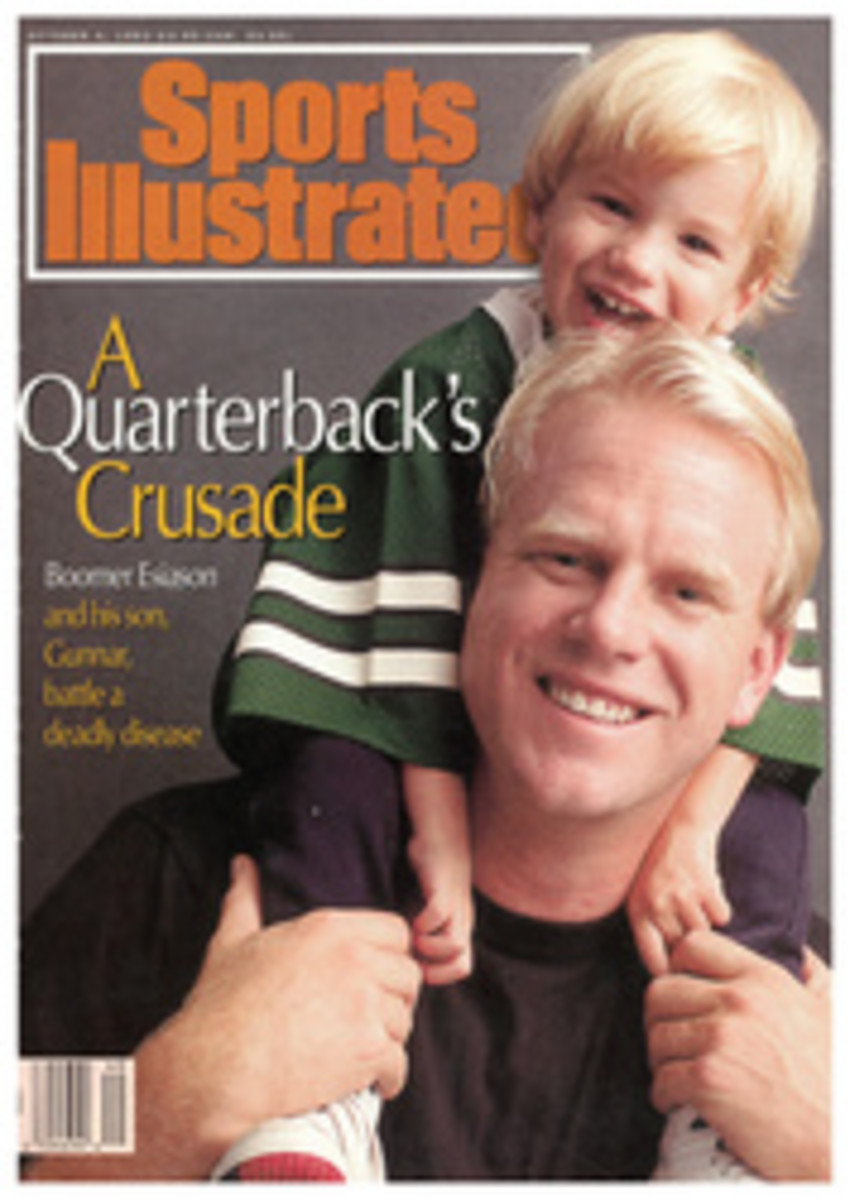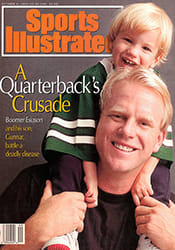
Personal Contact
Each Saturday during the fall, the five acres of playing fields at the southern end of Chicago's Lincoln Park are packed with men and women playing touch football. We're talking 320 teams, 4,800 people in all, who pass the pigskin in nonstop league play throughout the course of an eight-hour day. Every hour 40 15-person teams compete. And while the sight of so many indulging at once in athletics is arresting, a spectator is stunned to learn that the scene will be repeated again on Sunday.
The players are members of the wildly popular Chicago Social Club, founded four years ago to help single urban professionals meet one another by getting down and dirty on a playing field. "Sports is what we're all about," says founder Sandy Thomas, 31, who three years ago quit her $45,000-a-year marketing job to run the club full-time.
And because sports, not to mention l'amour, are hardly seasonal, neither is the club. In the winter there are leagues for coed volleyball and men's basketball. Come spring, look for more volleyball and touch football as well as floor hockey. In the summer there's beach volleyball, tennis and softball. The fall sports, in addition to football, are volleyball, soccer and floor hockey. After each event the club sponsors a happy hour at a local bar.
All told, 14,000 people are members of the Chicago club. Each has anted up a $30 annual membership fee, plus another $30 for each team he or she plays on. Thomas has already expanded her operation to 16 cities (Atlanta, Boston, Cincinnati, Cleveland, Dallas, D.C., Detroit, Houston, Indianapolis, Los Angeles, Philadelphia, San Francisco, Seattle, St. Louis and Minneapolis). "I'm pleased with how this has taken off," she says, "but I'm not surprised. Our generation doesn't want what the baby boomers had—80-hour workweeks and no free time."
Early in the fall of 1989, Thomas was dreading the impending Chicago winter, during which one can lose contact with casual acquaintances until the spring thaw. "I was coming off this great summer of having fun outdoors," says Thomas, "and I didn't want it to end. But, I didn't sit down and think about what would make a good business. This just happened."
Thomas, who has an M.B.A. from De-Paul, had played coed touch football as an undergraduate at Michigan's Albion College and thought it might be fun to do the same in Chicago. So she sent out 80 letters to friends inviting them to play football at Lincoln Park. More than 300 people turned out to play that first season, and 500 attended a wrap-up party.
This year the number of football players is limited only by how many people Lincoln Park's fields can accommodate over a weekend—7,200. The rules of the game are somewhat specialized. For one thing, during any play three of the eight people on the field for each team must be women. Teams are divided into three levels of ability, and championship sweatshirts are awarded in each division.
Because many of the club's members, who range in age from 22 to 40, appear to be right out of a J. Crew catalog, critics say the club appeals only to upscale young white professionals. "I've heard the elitist charges before," says Thomas, "but we don't discourage anyone from joining."
As a rule the clubs reflect the population of the neighborhoods in which they operate. Thomas has found that the most successful offshoots of the Chicago club have been in cities that have similar clusters of young professionals and plenty of public parks and athletic facilities.
But future success will depend on Thomas's continued prescience. The club has launched a nonprofit arm, Take Action!, which puts its members in touch with nonprofit organizations that need volunteers. Imagine thousands of energetic young jocks helping to make their cities more habitable. Could Thomas be on to another big thing?
PHOTO
CHARLES CHERNEY
Thomas began the club as a means of keeping up with friends over the long Chicago winter.
Lisa Twyman Bessone lives in Chicago and is a frequent contributor to Sports Illustrated.

